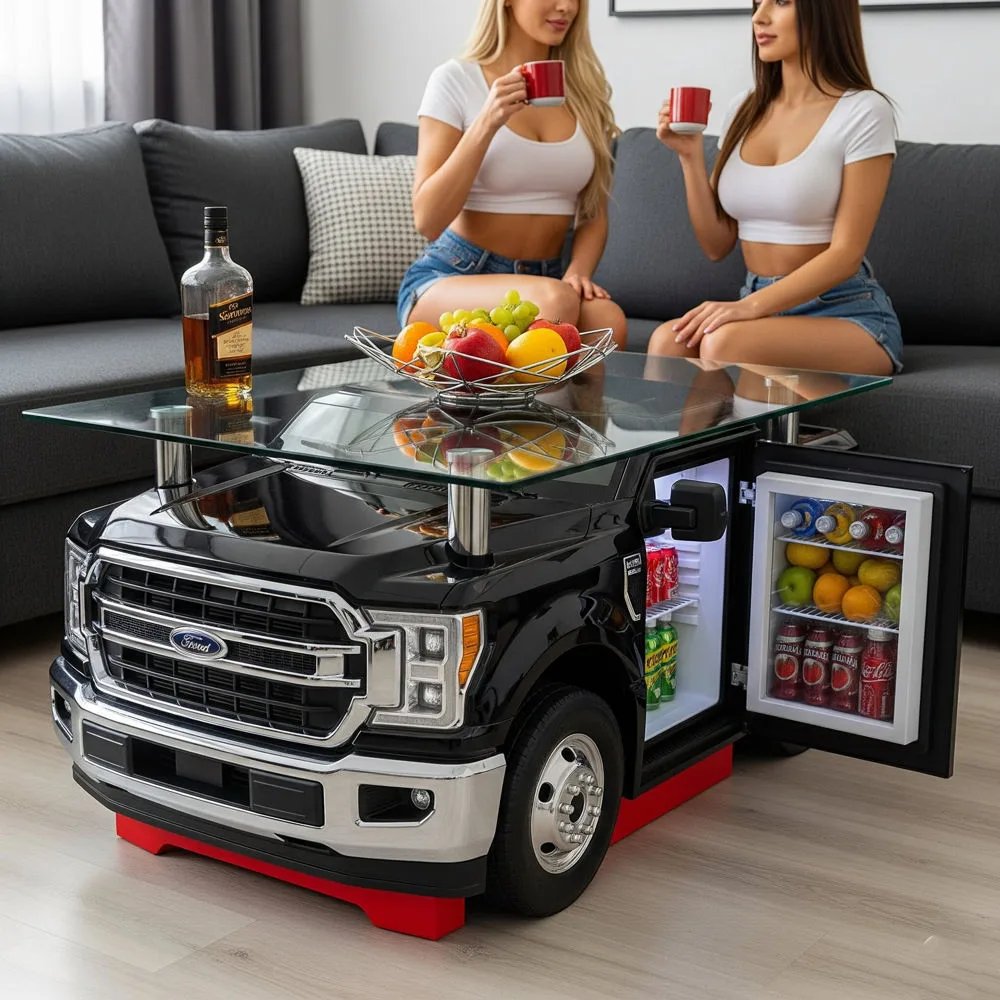The fusion of automotive history with interior design has given rise to one of the most compelling furniture trends in recent years: the pickup truck coffee table. These unique conversation pieces transform vintage auto parts into functional art for your living space, combining industrial aesthetics with nostalgic appeal. Whether you’re an automotive enthusiast or simply appreciate distinctive furniture with character, a pickup truck coffee table offers a perfect blend of form and function.
In this comprehensive guide, we’ll explore everything from sourcing authentic truck parts to completing your masterpiece with professional-quality finishes. You’ll discover the tools and techniques needed to create a durable, eye-catching centerpiece that celebrates automotive heritage while providing practical utility in your home. Let’s dive into the world of automotive furniture and learn how to build a pickup truck coffee table that will become the focal point of any room.
Why Choose a Pickup Truck Coffee Table?
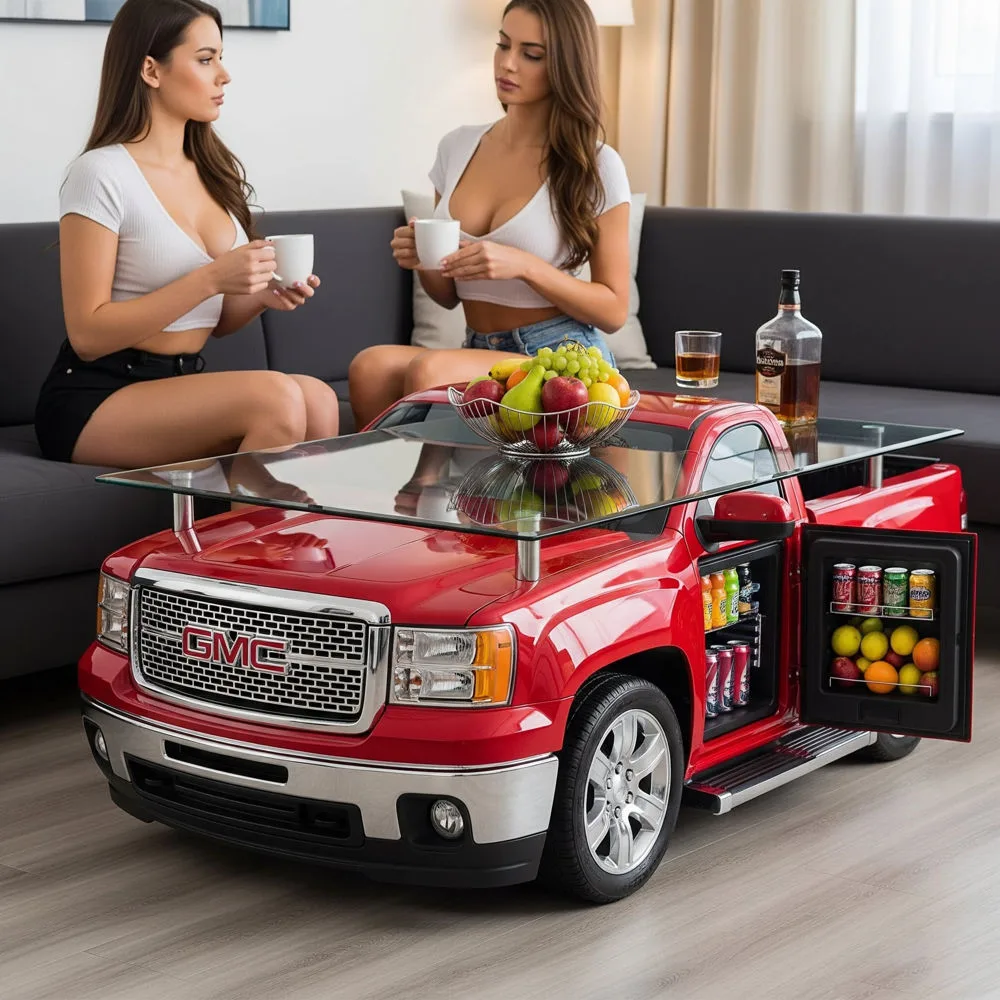
The Appeal of Automotive Furniture
The allure of automotive furniture lies in its ability to capture the essence of mechanical engineering and industrial design. Pickup truck coffee tables, in particular, preserve pieces of automotive history that might otherwise be forgotten or discarded. The rugged construction, distinctive shapes, and weathered patina of vintage truck parts create visual interest and tactile appeal that mass-produced furniture simply cannot match.
A Statement Piece with History
Every pickup truck coffee table tells a story. Whether constructed from a tailgate that traversed dusty country roads for decades or a hood that weathered countless storms, these pieces carry with them the narrative of American automotive culture. When repurposed thoughtfully, these elements become functional art that connects your living space to a broader historical context.
Sustainable Furniture Option
In an era increasingly focused on sustainability, repurposing vehicle components represents an environmentally conscious approach to home furnishings. By salvaging parts from junkyards or restoration shops, you’re extending the life cycle of these materials and reducing demand for newly manufactured items. A pickup truck coffee table isn’t just a style statement—it’s a commitment to creative reuse and responsible consumption.
Popular Types of Pickup Truck Coffee Tables
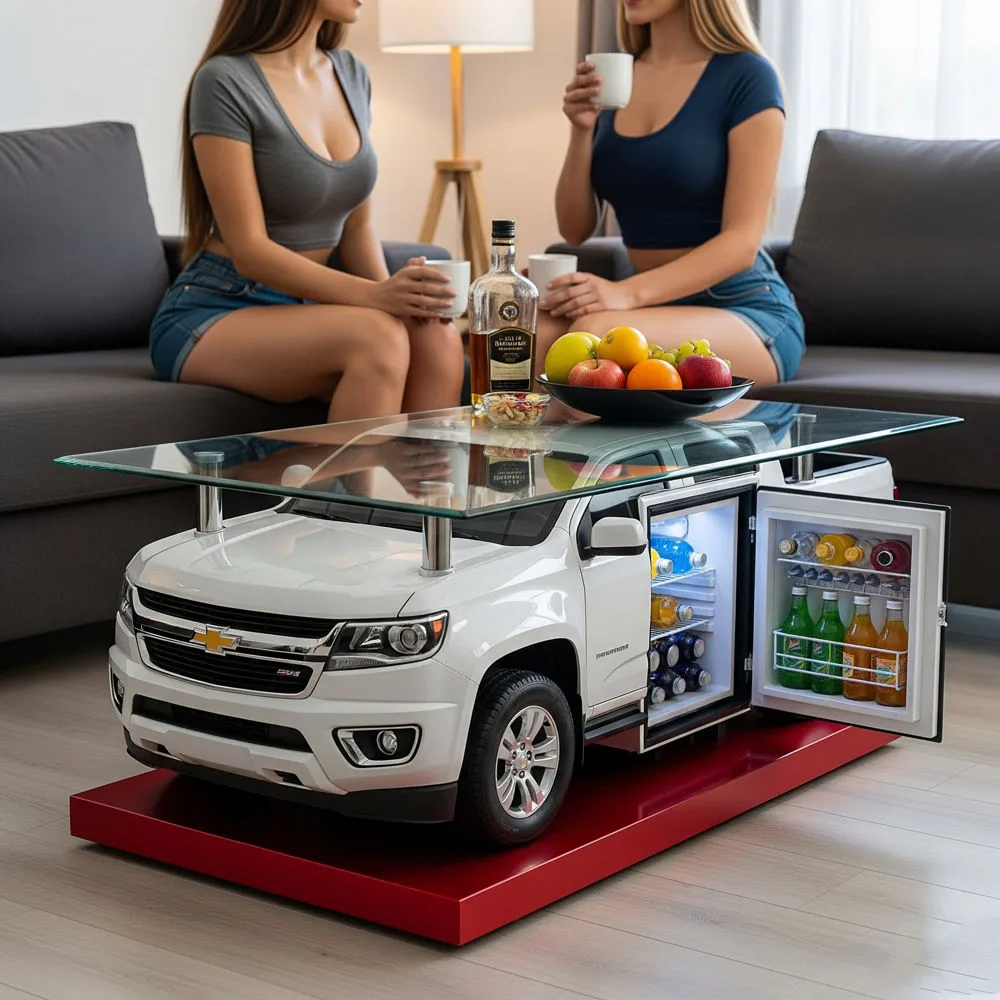
Tailgate Coffee Tables
The tailgate coffee table remains one of the most popular variations in automotive furniture. The distinctive branding, original paint, and authentic latching mechanisms of vintage tailgates provide immediate visual impact. These pieces typically incorporate the tailgate as the tabletop, supported by custom-fabricated legs or additional automotive components.
Hood Coffee Tables
For larger spaces, pickup truck hood coffee tables offer expansive surface area with distinctive character. The curved shapes and emblems of vintage truck hoods create dramatic silhouettes that dominate a room. When properly sealed and finished, these substantial pieces provide ample space for books, beverages, and decorative items.
Wheel and Rim Designs
For a more compact option, wheel and rim coffee tables incorporate the distinctive patterns of truck wheels with glass tops that preserve visibility of the mechanical components. These designs often feature hub caps, brake rotors, or other suspension elements arranged in artistic configurations that highlight their industrial beauty.
Combination Pieces
Some of the most creative pickup truck coffee tables combine multiple vehicle elements into cohesive designs. Incorporating headlights as accent lighting, using suspension components as structural elements, or combining grilles with tailgates allows for truly unique, one-of-a-kind furniture pieces that showcase comprehensive automotive knowledge.
Sourcing Materials for Your Pickup Truck Coffee Table
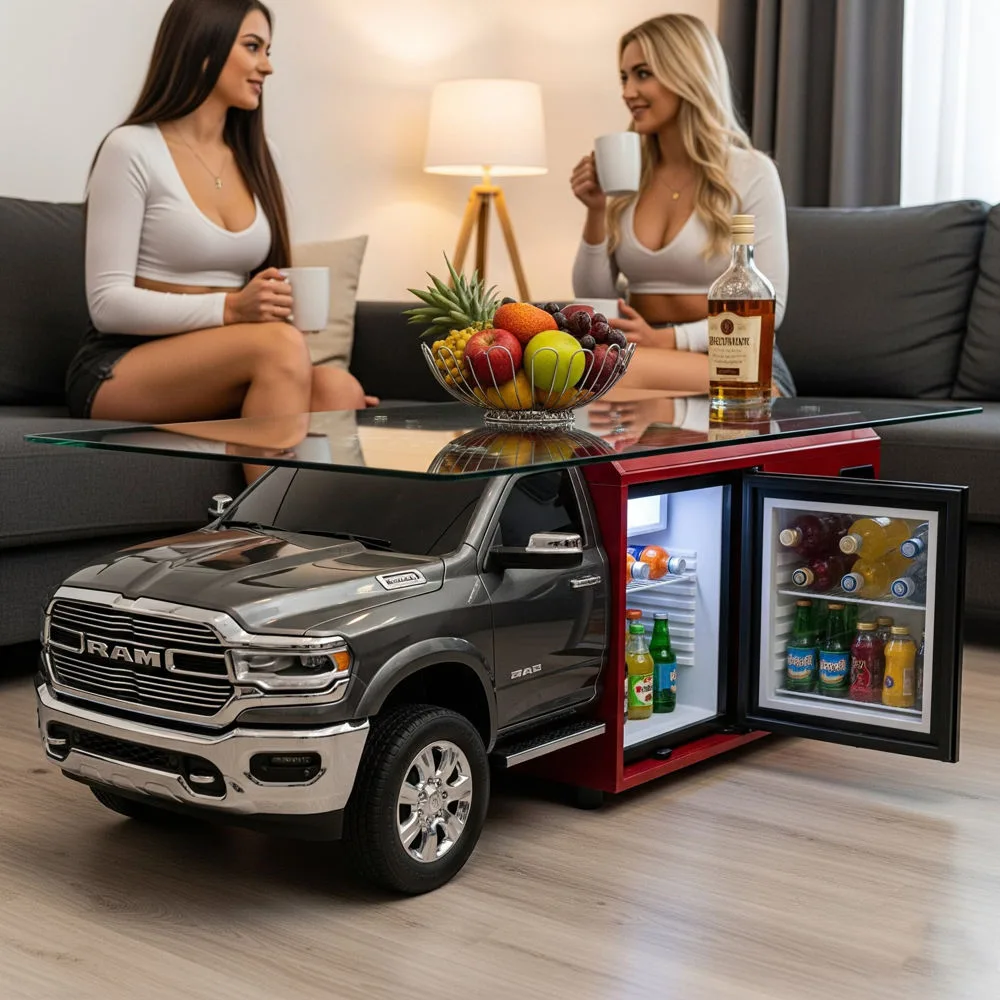
Finding Authentic Pickup Truck Parts
The hunt for perfect components often forms a significant part of the appeal in creating automotive furniture. Consider exploring:
- Salvage yards and auto recyclers
- Classic car shows and swap meets
- Online marketplaces specializing in vintage auto parts
- Restoration shops that might have excess or damaged parts
- Rural properties where vintage vehicles may have been abandoned
The condition of your salvaged parts will determine the amount of restoration required. While perfectly preserved pieces command premium prices, minor dents, rust patches, and signs of authentic wear often add character to the finished piece.
Essential Tools and Materials
Beyond the automotive components themselves, you’ll need:
- Angle grinder with cutting and sanding discs
- Welding equipment (MIG welder recommended for beginners)
- Metal brushes and sandpaper in various grits
- Primer designed for metal surfaces
- Clear coating products (polyurethane or epoxy)
- Glass cutting tools (if incorporating a glass top)
- Basic measuring and marking tools
- Safety equipment including gloves, eye protection, and respirator
Budgeting for Your Project
The cost of creating a pickup truck coffee table varies significantly based on your approach. Authentic parts from desirable vintage trucks can command premium prices, particularly for models with collector appeal. However, creative builders often find opportunities to salvage parts at minimal cost.
Additional expenses include finishing materials, supporting hardware, and any specialty tools required. While seeking economical options, remember that quality finishes and proper sealing materials are crucial investments that determine both the appearance and longevity of your finished piece.
Step-by-Step Guide to Building a Pickup Truck Coffee Table

Design and Planning
Before cutting or welding any components:
- Decide on the style and dimensions appropriate for your space
- Create a rough sketch indicating how components will fit together
- Consider the height, stability, and usability of your design
- Plan for any additional features such as storage or lighting
- Determine what structural elements will be visible vs. hidden
Taking time to properly plan your design prevents costly mistakes and ensures a functional finished product that meets your expectations.
Preparing Pickup Truck Parts
Proper preparation of salvaged automotive components is crucial:
- Begin by thoroughly cleaning all parts to remove grease, dirt, and loose paint
- Address rust spots through sanding, chemical treatment, or replacement
- Repair any structural damage that might compromise stability
- Remove sharp edges and potentially dangerous protrusions
- For tailgates or hoods, decide whether to preserve original patina or refinish
The balance between authenticity and refinement depends on your aesthetic preferences—some builders prefer to showcase the history evident in worn finishes, while others opt for restored or custom painted surfaces.
Building the Support Structure
Creating a stable base ensures your pickup truck coffee table will function properly:
- Fabricate or source legs appropriate to your design (metal tubing, additional auto parts, or wood)
- Ensure the base provides adequate support for the weight of your tabletop components
- Consider adjustable feet to account for uneven floors
- If using a glass top, create appropriate supports that won’t obscure view of featured components
- Test stability before proceeding to finishing stages
The support structure offers opportunities for additional creative expression—consider incorporating smaller automotive elements like gears, springs, or brackets as decorative accents.
Assembly and Finishing
Bringing all elements together requires careful attention to detail:
- Secure components using appropriate joining methods (welding, bolting, or adhesives)
- Test full assembly for stability and appropriate height (standard coffee tables range from 16-18 inches tall)
- Apply metal primer to prevent future corrosion
- Choose between preserving original finish with clear coat or applying new paint
- For functional surfaces, consider adding a glass top for practicality
- Apply multiple layers of clear protective coating to seal surfaces against moisture
Taking time with finishing steps ensures your pickup truck coffee table will maintain its appearance and structural integrity for years to come.
Styling Your Pickup Truck Coffee Table
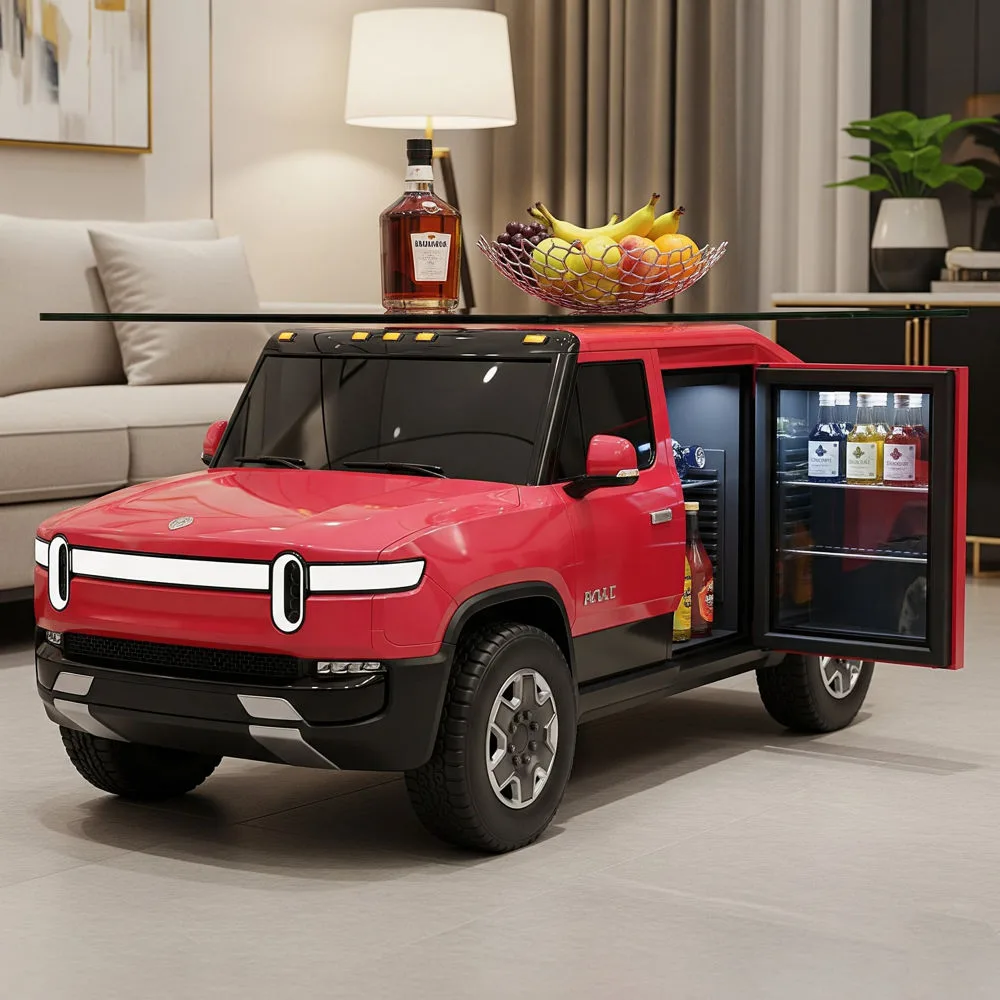
Complementary Décor
Your automotive-inspired coffee table pairs effectively with:
- Industrial-style lighting fixtures
- Leather upholstery
- Raw wood and metal accents
- Vintage automotive advertisements or photography
- Machine-age decorative objects
While the table itself makes a bold statement, surrounding it with complementary pieces creates a cohesive design narrative.
Balancing Masculine and Softer Elements
The inherently industrial nature of pickup truck coffee tables benefits from thoughtful balance:
- Incorporate textiles with contrasting textures
- Consider adding plants to soften mechanical edges
- Use books and decorative objects to create visual balance
- Mix in warmer materials like wood or leather
- Balance colors to complement the table’s finish
Creating contrast prevents the space from feeling overwhelmingly industrial while allowing your automotive centerpiece to remain the focal point.
Maintenance and Care
Protect your investment through proper maintenance:
- Dust regularly with a soft, dry cloth
- Avoid placing extremely hot items directly on finished surfaces
- Use coasters to prevent water rings on clear-coated surfaces
- Periodically check for signs of rust or finish degradation
- Reapply clear protective coating as needed
With proper care, your pickup truck coffee table will maintain its distinctive character for decades.
Customization Ideas for Pickup Truck Coffee Tables
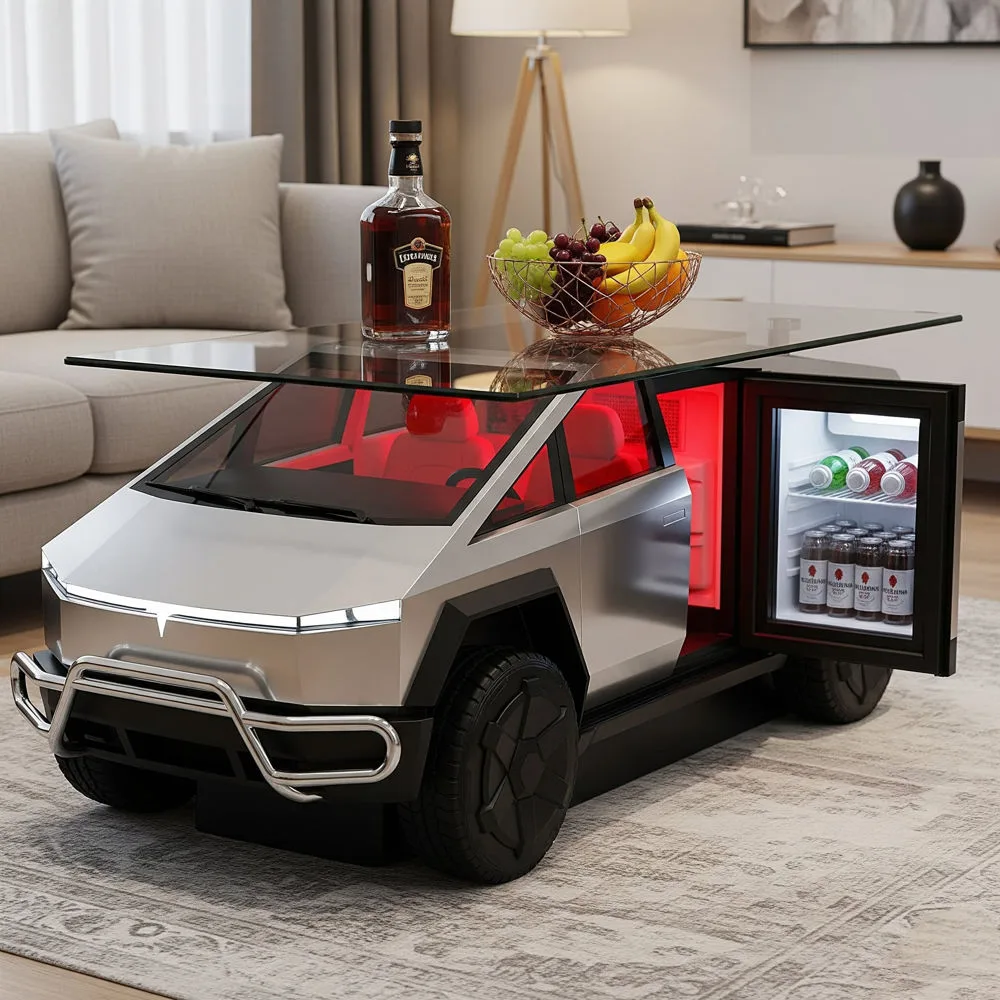
Integrated Lighting
Enhance the visual impact of your creation:
- Install LED strips along undercarriage components
- Incorporate original headlights as functional lighting
- Use battery-powered puck lights to highlight specific features
- Create shadow patterns with strategically placed light sources
Thoughtful lighting transforms your pickup truck coffee table from daytime conversation piece to evening ambiance creator.
Storage Solutions
Increase functionality with hidden storage:
- Create hinged compartments within truck beds
- Install sliding drawers beneath tailgate surfaces
- Utilize hollow components as concealed storage areas
- Add shelving between structural elements
Practical storage options enhance the utility of your statement piece.
Interactive Elements
Preserve the mechanical nature of your components:
- Maintain functioning latches on tailgates
- Incorporate rotating or spinning elements
- Preserve adjustable features from original components
- Create movable or reconfigurable sections
Interactive elements celebrate the engineering behind automotive design while creating engaging furniture.
Professional Tips for a Museum-Quality Finish
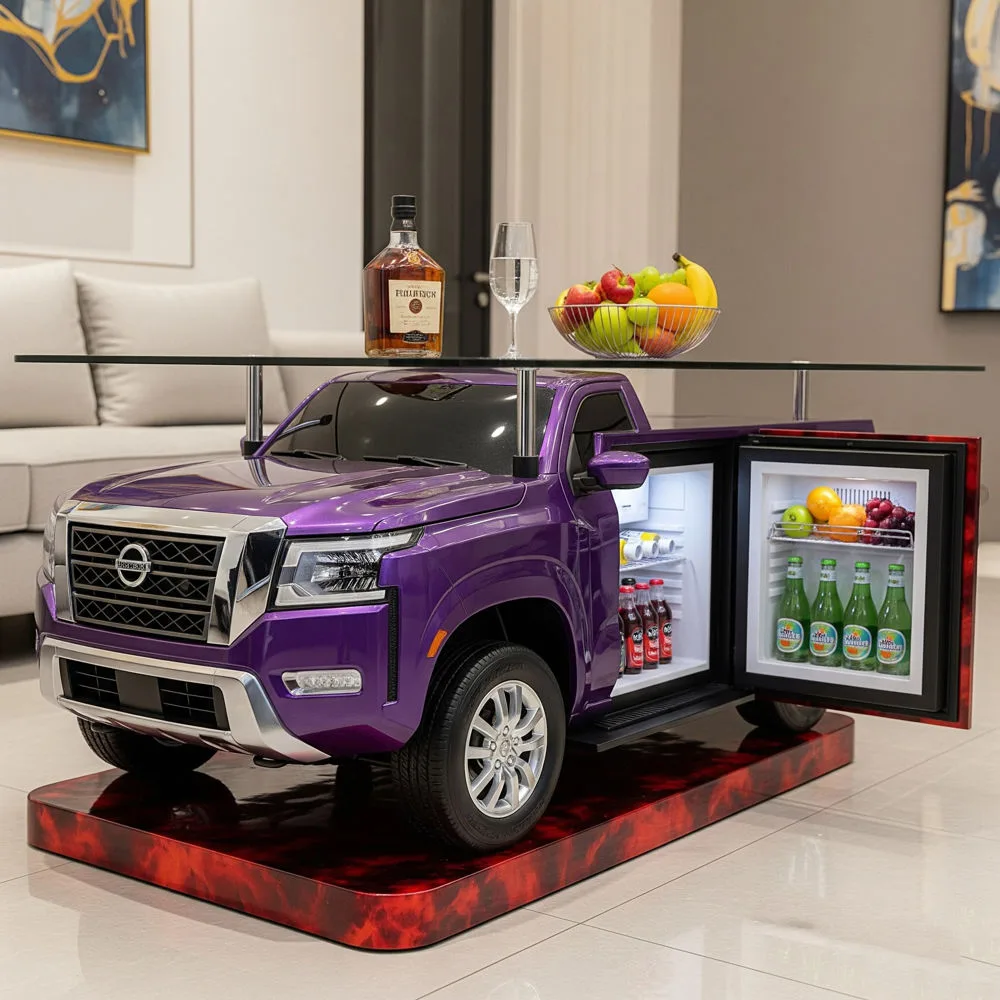
Preservation vs. Restoration
Consider your aesthetic goals:
- Authentic patina tells a story but may require sealing to prevent transfer
- Full restoration creates a showroom-quality appearance but may diminish historical character
- Partial restoration balances authenticity with refinement
- Custom finishes allow for personal expression while honoring automotive heritage
There’s no single correct approach—your preference determines the character of your finished piece.
Working with Glass Elements
Incorporating glass surfaces requires specialized knowledge:
- Choose appropriate thickness (typically 3/8″ to 1/2″ for coffee tables)
- Opt for tempered safety glass to prevent dangerous breakage
- Consider beveled edges for both safety and visual appeal
- Use silicone spacers to prevent direct contact between glass and metal
- Ensure glass dimensions provide appropriate overhang for safety
Glass tops protect original finishes while creating usable surfaces for beverages and objects.
Professional Coating Techniques
Achieve superior results with these finishing approaches:
- Apply thin, multiple coats rather than single thick layers
- Sand lightly between coats for smooth results
- Consider two-part epoxy for maximum durability
- Use automotive-grade clear coats for authentic finishes
- Allow proper curing time between applications
Professional-quality finishes distinguish exceptional pickup truck coffee tables from amateur attempts.
Conclusion
Creating a pickup truck coffee table represents more than a furniture project—it’s an opportunity to preserve automotive history, express personal creativity, and establish a distinctive focal point in your living space. These unique pieces bridge industrial heritage with contemporary design, bringing character and conversation to modern interiors.
Whether you choose the streamlined simplicity of a tailgate design, the dramatic impact of a hood table, or a complex arrangement of multiple components, your pickup truck coffee table will stand as testament to both automotive craftsmanship and your personal vision. The process of hunting for perfect components, carefully preparing and assembling them, and finally displaying your creation is rewarding at every stage.
As sustainability and individuality continue to drive interior design trends, these repurposed automotive pieces offer perfect alignment with contemporary values. Your pickup truck coffee table doesn’t merely occupy space in your home—it tells a story, preserves history, and creates connections between past and present.
Start planning your automotive furniture project today, and soon you’ll be enjoying coffee, conversation, and compliments around a truly one-of-a-kind pickup truck coffee table.

